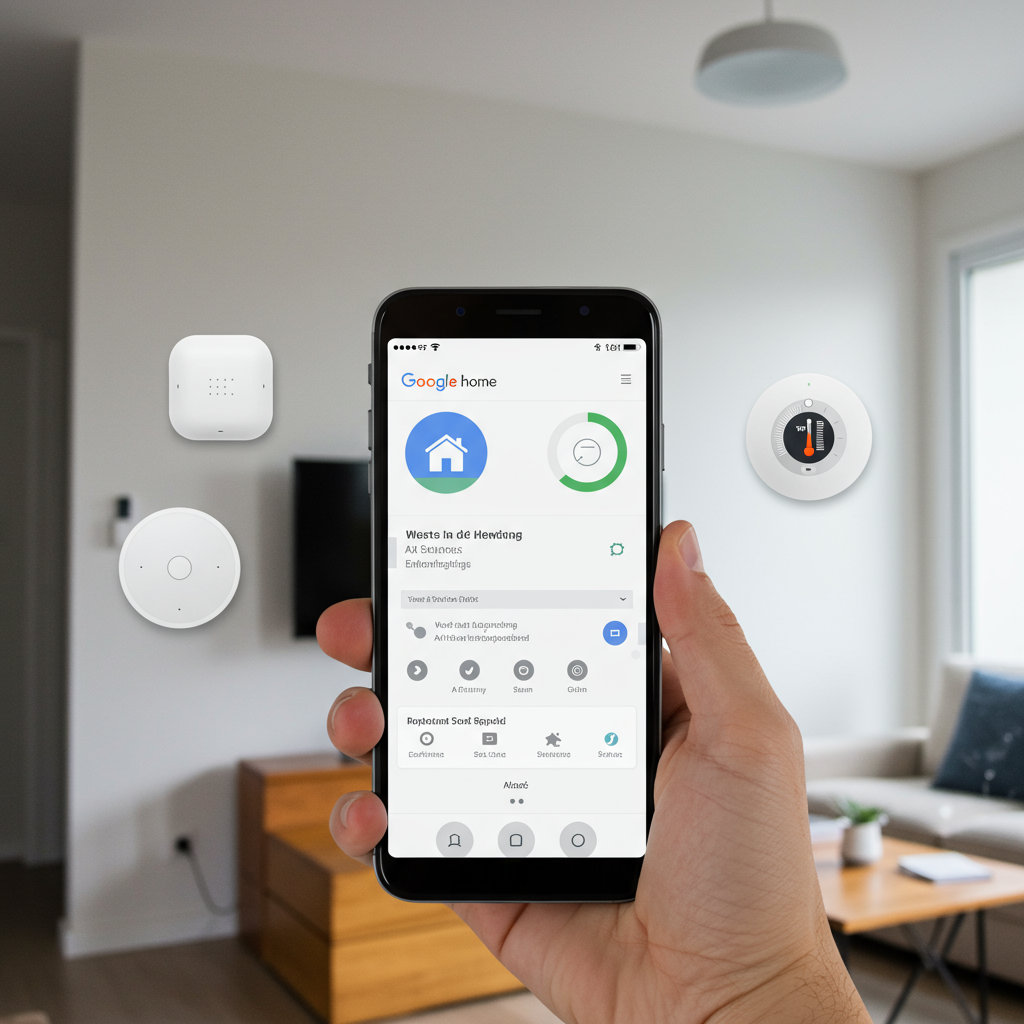Welcome to the future of home living! As our houses fill with intelligent gadgets designed for comfort, security, and efficiency, managing them all can feel overwhelming. Different brands mean different apps, leading to a cluttered phone screen and fragmented control. But what if there was a single, powerful solution to bring everything together? google has developed just such a tool, promising to simplify your connected life and put control firmly in your hands, no matter the device manufacturer.
Google Home: Your Central Smart Hub
At its core, the Google Home app serves as the command center for your entire smart living environment. Available for free and often pre-installed on Android smartphones, this application consolidates control over a wide array of smart devices into one intuitive interface. Forget juggling separate apps for your smart lights, thermostat, plugs, or security cameras. Google Home is designed to unify your digital household, making management faster and significantly less complicated. It’s Google’s direct answer to the growing demand for seamless, integrated smart home experiences.
Multi-Brand Magic: How Matter and Google Home Connect Your Devices
One of the most compelling aspects of Google Home is its ability to bridge the gap between different brands. This crucial functionality is largely powered by its compatibility with the Matter standard and Google’s own robust ecosystem integration.
Matter is an open-source, IP-based connectivity standard backed by major tech companies like Google, Apple, Amazon, and Samsung. It acts as a universal language for smart home devices, enabling them to communicate with each other and with different platforms locally, securely, and reliably over Wi-Fi, Ethernet, and Thread networks. When a device is Matter-certified, it can be set up and controlled by any compatible platform, including Google Home, regardless of the manufacturer. This ensures unprecedented interoperability.
Beyond Matter, Google Home also directly supports many devices built to work specifically within its ecosystem. This dual approach allows the app to manage a vast range of products, from popular smart plugs like those reviewed by Wirecutter, which offer features like scheduling and energy monitoring, to complex security systems and entertainment devices like the Google TV streamer. As long as your smart gadget supports either the Matter standard or is certified “Works with Google Home,” you can likely control it from within the app, freeing you from brand-specific silos.
Voice Control with Gemini AI
Integrating cutting-edge technology, Google Home is compatible with Gemini, Google’s advanced AI assistant. This powerful partnership elevates your smart home control beyond simple taps on a screen. With Gemini, you can use natural voice commands to interact with your connected devices.
Want to dim the living room lights? Just say the word. Need to adjust the thermostat temperature? Ask Gemini. The AI interprets your instructions and executes them swiftly on your registered devices. This voice integration adds a layer of convenience, allowing hands-free control and making your smart home more accessible and responsive. Google is even opening its Home APIs to developers, potentially allowing third-party apps to leverage this deep assistant integration for custom functionalities within their own interfaces.
The Power of Local Control
A significant advancement in the Google Home ecosystem is the enhancement of local control capabilities, particularly for Matter-certified devices. Traditionally, many smart home interactions required a round trip through the cloud – sending a command from your phone app to a company’s server online, which then relayed it back to your device at home. This created potential points of failure, latency, and reliance on a stable internet connection.
Now, thanks to Google’s “Home Runtime” feature integrated into various Google Home hubs (including Google Nest hubs, speakers, Chromecasts, Google TV devices running Android 14, and some LG TVs), many Matter devices can be controlled locally within your home network. This means commands are processed directly between your hub and the device, dramatically increasing reliability, reducing latency, and enhancing privacy since data stays within your home. Crucially, it allows you to control devices like lights or locks even if your internet service goes down, a vital feature for security and basic functionality. This local control is a game-changer for the user experience.
Beyond Basic Control: Organization and Automations
Managing a house full of smart gadgets could quickly become confusing without proper organization. Google Home addresses this by allowing you to register every device and arrange them logically.
Keep Your Smart Home Organized
The app lets you assign devices to specific rooms in your house, creating a clear and intuitive layout. This room-based structure makes it simple to find and control devices quickly, even if you have multiple items in the same area. Furthermore, if you happen to own more than one property, the app supports registering multiple houses under a single account. You can easily switch between controlling your primary residence and a vacation home, for example, and even share access with family members or trusted individuals.
Unlock Smart Routines and Automations
Perhaps the most exciting feature Google Home offers is the ability to create customized automations, often called “Routines.” Instead of performing multiple actions manually, you can combine them into a single command or trigger.
Imagine saying “Good morning” and having the lights turn on, the thermostat adjust to your preferred temperature, and your mobile alarms automatically turn off. Or, as you settle into bed, a simple “Good night” command could switch off all electrical devices, activate an air purifier, and disconnect non-essential network connections like Wi-Fi or NFC. These personalized Routines save time and effort, making your smart home proactively work for you and significantly increasing convenience, echoing the core reasons why people embrace smart home technology in the first place – for automation and effortless control.
A Platform for Developers and Innovation
Google’s commitment to the smart home ecosystem extends beyond just the consumer app. By opening its Home APIs to all developers, Google is inviting innovation and deeper integration. These APIs provide developers with tools to interact with Google Home’s vast network of connected devices (estimated at over 600 million), manage both cloud and Matter devices, and even simplify the device setup process using Android’s Fast Pair technology.
This means that third-party smart home apps could potentially offer a more seamless experience, leveraging Google Home’s infrastructure for device management and automation logic directly within their own applications. For users, this could translate to more choices in how they interact with their smart home and potentially richer, more integrated experiences down the line. This strategic move indicates Google is building a robust, open platform designed for future growth and widespread adoption.
Are There Any Limitations?
While Google Home is incredibly versatile, it’s important to note that it may not unlock every single advanced feature offered by every device brand. For instance, you might not have access to highly specific settings or unique light effects only available through a manufacturer’s proprietary app. However, even with these potential limitations, the core benefits of comfort, simplicity, flexibility, and unified control remain central to the Google Home experience. No single app can perfectly replicate the nuances of hundreds of different device interfaces, but Google Home provides a comprehensive and highly functional common ground.
The Future of Smart Living
The Google Home app, powered by the Matter standard, Gemini AI, local control capabilities, and an open developer platform, is positioning itself as a leading solution for managing the increasingly complex landscape of smart devices. Its ability to connect products across brands and offer intuitive control via touch and voice makes the smart home more accessible and user-friendly. Features like robust organization, customized automations, and reliable local control demonstrate a clear focus on user experience and practical value. As technology continues to advance, with underlying OS updates like Android 16 adding features relevant to overall system interaction and security, Google Home seems poised to evolve further, making our lives at home more connected and convenient than ever before.
Frequently Asked Questions
What smart devices work with the Google Home app?
The Google Home app is designed to control a wide range of smart devices, including lights, thermostats, plugs, cameras, locks, and more. It achieves broad compatibility primarily through support for the Matter standard, which allows devices from different brands to work together, and its own “Works with Google Home” certification program. If a device carries the Matter logo or is listed as compatible with Google Home, you can typically add and control it via the app.
Do I need a Google Home hub for local control of devices?
Yes, to benefit from full local control of Matter devices, you generally need a compatible Google Home hub device present on your network. These hubs, which include certain Google Nest speakers and displays, Chromecasts, and Google TV devices, feature the “Home Runtime” capability. This allows them to process commands within your local network for improved reliability, speed, and offline access, rather than relying solely on cloud communication.
What are the biggest advantages of using Google Home for smart devices?
The primary advantages include unified control over multi-brand devices in a single app, eliminating the need for numerous manufacturer-specific applications. It offers convenient voice control through integration with Gemini AI. The app allows for easy organization of devices by room and house, supports multi-property management, and enables powerful customized automations (Routines) to combine multiple actions. Enhanced local control via hubs provides better reliability and speed.




